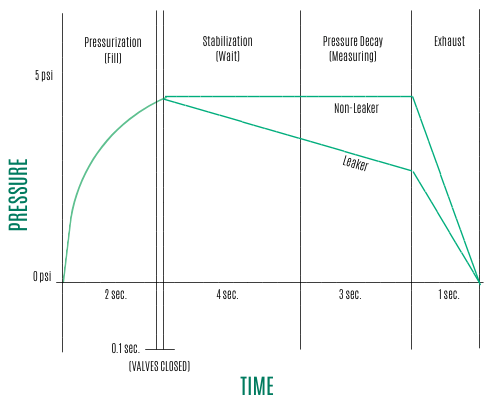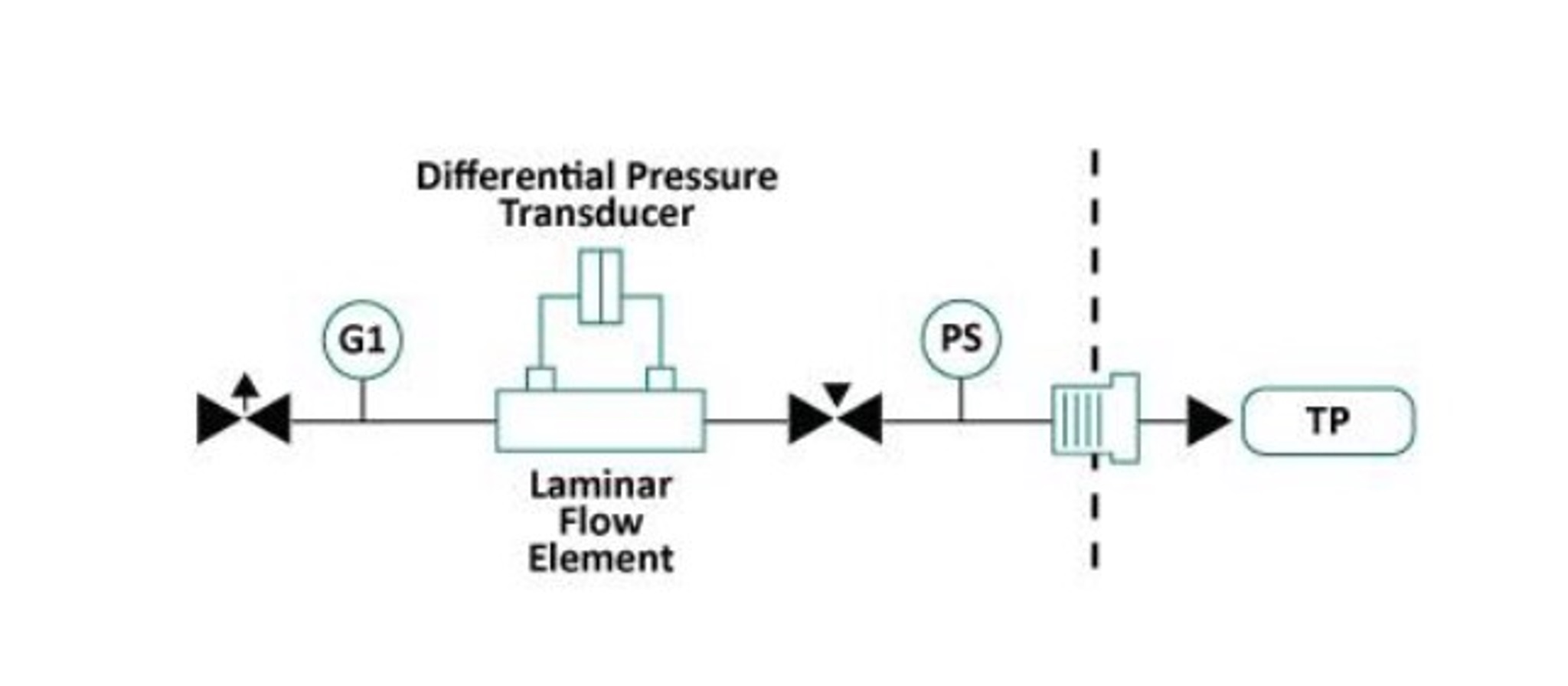Modern leak testing methods
In leak testing, a product is checked for leaks (defects). Various test methods are used in the process. Modern leak tests use air pressure, electronics and pneumatic components to perform pressure tests. In electronic pressure testing, a test piece is filled with air pressure, stabilised and then tested for leaks.
...
The computer or electronics controls the timing of the individual steps and reads the air pressure of the test piece. The pneumatic components control where the air pressure goes and convert the air pressure of the test part into an electrical signal.
The pneumatic component that converts the air pressure into an electrical signal is called the pressure transducer. During the measuring step, the siganle of the pressure transducer is recorded to create a graph of the pressure curve over time. After the measurement step, the computer compares the recorded values with the target values for "good parts". If the values are within the given tolerances, the test result "PASS" is displayed.
Graphical recording of the pressure curve of a leaky and leaky test item:

What types of leak tests can be carried out?
Below is a list of the most common test methods:
Back pressure flow test
Burst test
Continuous flow test
Crack test
Differential pressure drop
Differential vacuum drop
Force decay test
Laminar flow test
Mass flow test
Occlusion test
Pressuredecay
Pressure rise test
Seal creep test
Sealed component test
Vacuum burst test
Vacuum decay test

Overview of the most common test methods that can be performed by Uson leak testers.
more